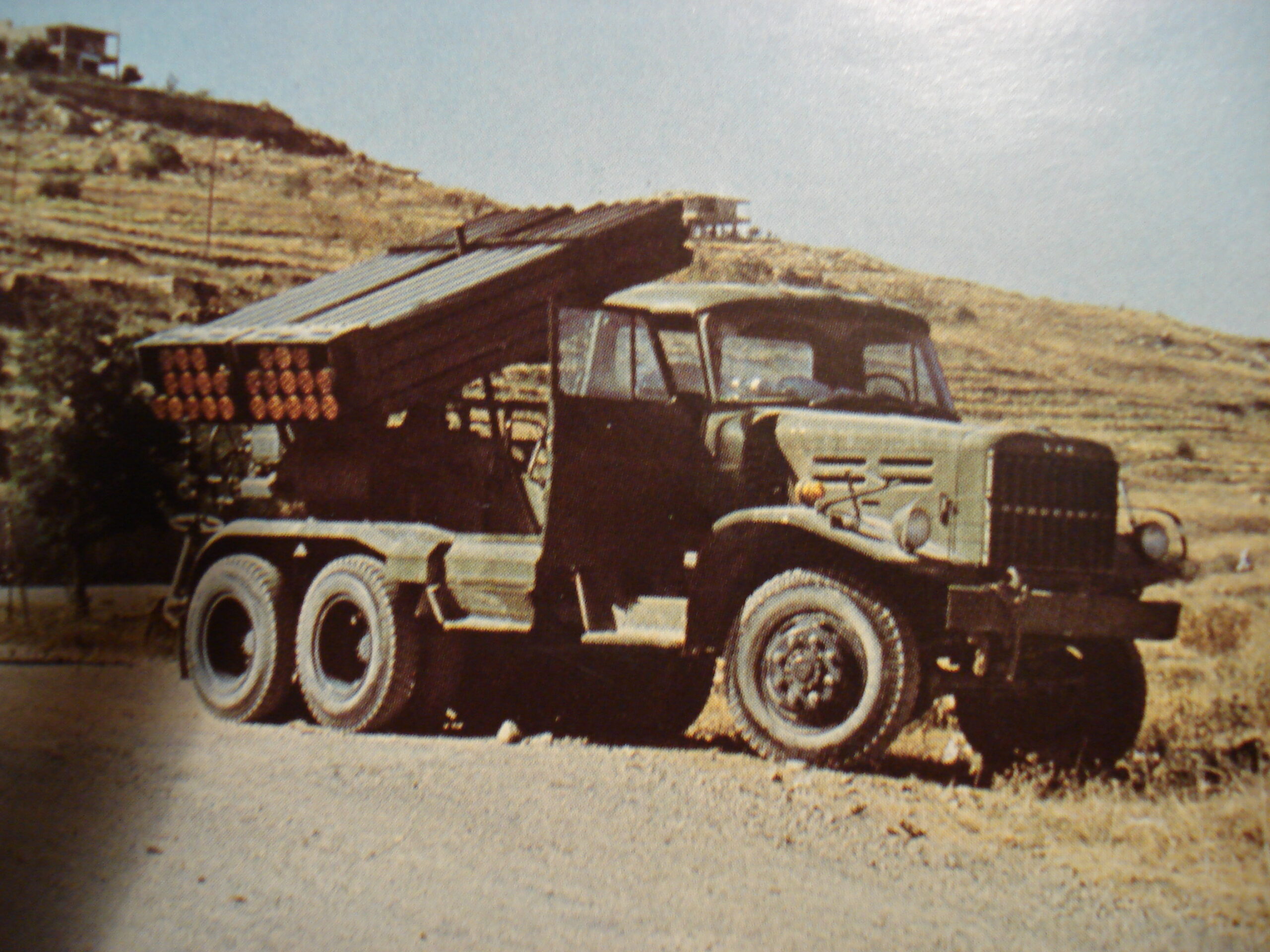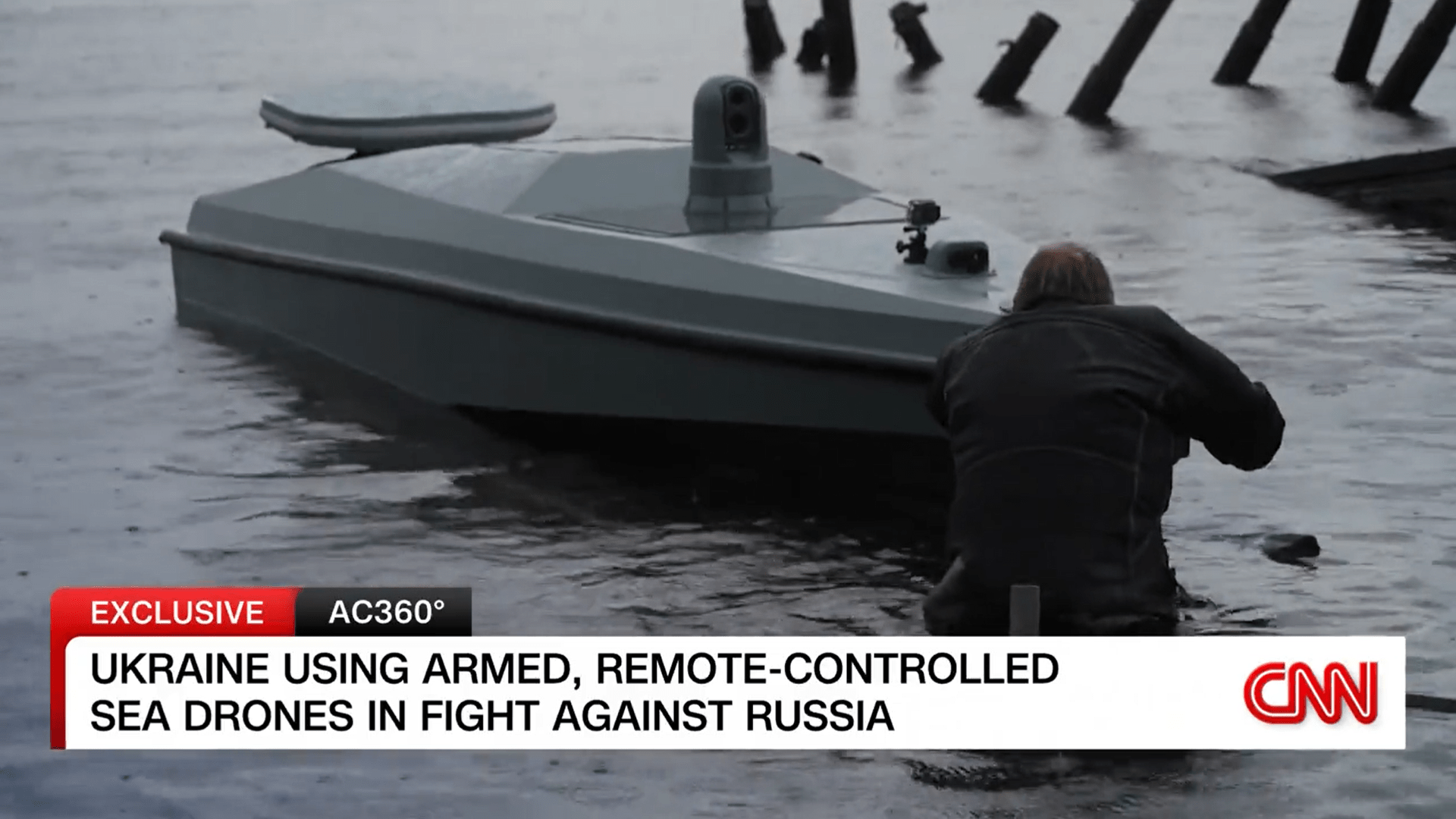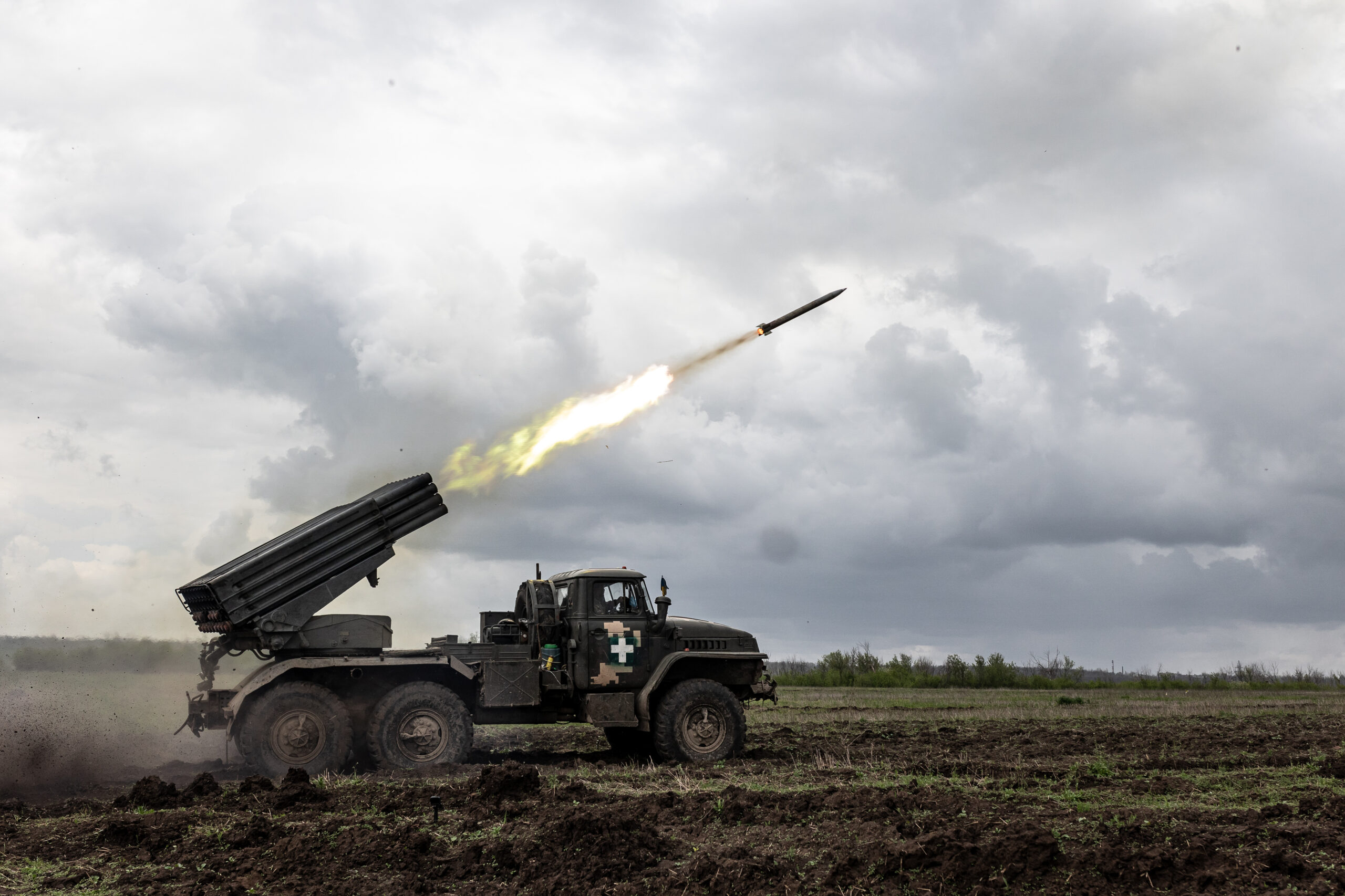In another bizarre example of Ukraine searching high and low for ammunition, Kyiv has been striking Russian positions with 122mm Grad rockets from an interesting source: North Korea.
Christopher Miller (@ChristopherJM ) reported in Financial Times on Saturday that a batch of rockets from one of Moscow’s few remaining allies made it into the Ukrainian stockpile. Exactly how Kyiv got them remains in question, the rockets were either captured from Russian positions or allegedly seized at sea by a friendly country and donated to Ukraine.
Citing a Ukrainian artillery commander, Miller reports the rockets have earned a troublesome reputation for duds and misfires, so much so that a soldier warned not to stand too close to the BM-21 launcher when it fired the rounds. Markings reportedly indicate they were manufactured in the 1980s or 1990s. Miller spoke to Ukrainian soldiers using the rockets on Bakhmut’s flanks, but photos from late June show another batch of rockets in use with a unit fighting near Orikhiv in Zaporizhzhia Oblast.
A staple of many conflicts since its introduction in the mid-1960s, a BM-21 can fire its full load of 40 Grad rockets in 20 seconds, saturating a broad target area with munitions. They have been widely used by both sides of the war since the full-scale invasion’s opening hours.


Like many Soviet Cold War systems, it was widely proliferated, reproduced, and adapted by Warsaw Pact and Moscow-aligned countries, including North Korea. Pyongyang has its own version of the launcher, known as the BM-11, but it carries only 30 rockets and rides on a different chassis.

The U.S. has previously accused North Korea of providing vast stocks of weapons, ammunition, and winter gear to Russia to support their war in Ukraine. A further sign of the nations’ codependence, Russian Defense Minister Sergei Shoigu led Moscow’s delegation to Pyongyang this week marking the 70th Anniversary of the Korean War Armistice.
However Ukraine got the rockets, it’s the latest example of Kyiv and its allies securing whatever large caliber ammunition supplies they can to feed the war effort as the counteroffensive continues. Last October, we wrote about the remarkable case of the Royal Air Force shuttling thousands of Soviet-caliber artillery rounds from Pakistan to Romania for later transfer to Ukrainian forces. As long as much of Ukraine’s army relies on Soviet-made artillery, the hunt for third-party ammunition supplies will continue.
Before we head into the latest news from Ukraine, The War Zone readers can catch up on our previous rolling coverage of the war here.
The Latest
CNN got an up-close look at one of Ukraine’s latest drone boat, that follows in a lineage that includes those used in past raids against Sevastopol, attacks on ships of the Black Sea Fleet, and possibly in a recent strike on the Kerch Strait Bridge,. The low-visibility gray boat has a gimballed and staring optical sensors allowing for remote control. It can reportedly carry a big 300-kilogram warhead out to a range of 800 kilometers.
The boat can be seen making tight turns and maneuvers just offshore while under the control of its operator, call sign “Shark.” He told CNN the drone boats exploit a hole in Russian warships’ defenses with their low profile.

Warships of the Black Sea Fleet are designed to fight other warships and target similarly sized surface vessels, Shark said. Their sensors and targeting systems are ill-equipped to track and engage the low-observable boats. Still, Russian ships and helicopters have managed to engage the boats in massed small arms and cannon fire once within visual range.
The satellite communications array seen at the rear of the boat is also new. It is widely assumed that Starlink was used on earlier Ukrainian drone boats, but the company began limiting access to certain areas and other parameters to negate the system’s with weapons like drone boats. This new satcom array likely gets around those limitations by using another provider.
In its Saturday intelligence update, the British Ministry of Defense noted increased fighting in two frontline sectors in southern Ukraine over the last 48 hours. Battles between Ukrainian forces and elements of Russia’s 58th Combined Arms Army are ongoing near the village of Robotyne as Ukrainian troops try to breach the first of Russia’s defensive lines.
The update also confirmed the news of Staromaiorske’s liberation, the Donetsk Oblast logistics node to the east. Ukrainian forces retook the village from the VDV’s 247th Guards Air Assault Regiment. At the same time, however, other VDV units have continued attacks in the Serebriansk Forest along the Kremina-Svatove line, though they have gained little ground on Ukrainian forces.
The Institute for the Study of War (@TheStudyofWar ) reported the Ukrainian offensive on Robotyne was unsuccessful, though they have reportedly closed to the town’s northeast outskirts.
Drone video is claimed to show a failed Ukrainian attack east of Robotyne, with mounted troops advancing from a heavily cratered treeline up to Russian trenches. However, the column ends up exposed in the open, with heavy fire coming down on the Ukrainian vehicles.
If it wasn’t apparent from the last two months of Ukrainian counterattacks against dug-in Russian positions, there has been neither a sweeping advance nor a rout of Russian forces like those in Kharkiv and Kherson oblasts last year. Speaking in ISW’s Briefing Room on YouTube, Russia analyst George Barros cautioned against lofty expectations for the coming weeks.

Also in the south, Ukrainian counterbattery fire continues to hunt down Russian guns. In a Telegram post, Russian blogger Ross Marsov says a battalion’s worth of artillery guns have been lost in an area known as the “Vremevsky Ledge” around Staromlynivka in the last two months.
Video shows a strike on a Russian 2A36 Giatsint-B 152mm field gun position, with some of the nearby ammunition cooking off after the strike. Another video shows the gun’s self-propelled counterpart, the 2S5 Giatsint-S, burning down after a Ukrainian attack.
There’s also an incredible photo from the Ukrainian Ministry of Defense showing a 155mm rocket-assisted-projectile (RAP) fired by troops with the 57th Motorized Infantry Brigade. Brilliant flames from the rocket motor can be seen pouring out from behind the shell just after launch.
Clips from Ukraine’s 3rd Company, 3rd Separate Assault Brigade show incredible first-person footage of a mechanized attack on Russian positions near Bakhmut. Dismounting from their M113 armored personnel carrier, the troops move up through the tall grass before descending into the trenches and dugouts. Overhead drone footage shows the harrowing advance into the trenches and foxholes as Ukrainians clear the positions.
Also near Bakhmut, Ukrainian President Volodymyr Zelensky visited Special Operations Forces (SSO) troops to meet with commanders and commend their efforts in the sector. Saturday is also Day of Special Operations Forces of the Armed Forces of Ukraine, which Zelensky marked with a video showing some of SSO’s operations since the war began.
Zelensky also made another visit to a Donetsk Oblast gas station, where he took selfies with Ukrainian troops behind the lines.
Two explosions rocked the city of Donetsk on Saturday, the first an attack on the Ministry of Internal Affairs building seen from a passing dashcam. It’s not clear from the video what kind of munition was used, but large chunks of building and concrete sidewalk can be seen raining back to the street as the driver speeds away.
Later in the day, a reported Russian ammunition dump in the city exploded with numerous secondary blasts heard on video of the distant flames.
Explosions were also reported in occupied Crimea, where there was reportedly an attack on the critical Chongar Bridge connecting the peninsula to Ukraine. We wrote about an earlier strike on the bridge, one of Ukraine’s first using the British-supplied Storm Shadow cruise missiles, in June.
Reports have since emerged that the bridge is now closed with road traffic having backed up into Crimea. Russian accounts had intercepted a number of cruise missiles in an attempted attack, but the Ukrainian Armed Forces has claimed a “successful attack” on the bridge. It remains to be seen how and if the bridge was indeed hit in the strike.
Also in Crimea, the Ukrainian GUR military intelligence agency claims several explosions occurred at a Russian ammo depot near Cossack Bay in Sevastopol’s west end. The 810th Guards Naval Infantry Brigade is based in the numerous military facilities along the bay, and Ukraine struck the nearby fuel depot in late April.
In Poland, two more Leopard 2A4 tanks arrived at the Giwice maintenance hub for repairs after taking battle damage in Ukrainian service. The long supply line for such repairs to get those tanks back in the fight is precisely why German arms maker Rheinmetall will soon open a repair center inside Ukraine.
The Polish government has also further sounded alarm over Wagner Group PMC forces in neighboring Belarus. Having already deployed additional troops to the border after Wagner elements neared, Polish Prime Minister Mateusz Morawiecki claims more than 100 Wagner troops have moved toward the strategic Suwalki Gap.
The move, Morawieki says, is to disguise Wagner forces as Belarussian border guards and assist migrants trying to illegally cross into Poland, what the prime minister called an “unconditional step” towards a hybrid attack on Poland.
As Russian troops poured into Belarus and massed ahead of their invasion of Ukraine, Warsaw and Minsk came into crisis amid significant unrest over migrant riots along their borders in late 2021.
At the occupied Zaporizhzhia Nuclear Power Plant, International Atomic Energy Agency inspectors have confirmed one reactor’s cold shutdown and another’s move to “hot” shutdown. The IAEA team further reported the reactor vessel, spent fuel pool, and steam generator appeared to be in “normal” condition.
Russian forces have captured a Ukrainian CV9040C infantry fighting vehicle near Kremina in Luhansk Oblast. The Swedish-supplied vehicle was reportedly damaged by an RPG and abandoned by its crew a few days before its capture.
Lastly, there is a remarkable clip from a Ukrainian first-person-view (FPV) kamikaze drone flying right in the open back window of a Russian SUV. The strike reportedly occurred on the E40 highway north of Bakhmut, with the drone’s final moments capturing a Russian occupant holding his phone as if to take a picture just before impact.
That’s all for now. We will update this story when there’s more to report on Ukraine.
Contact the author: stetson.payne@thewarzone.com
